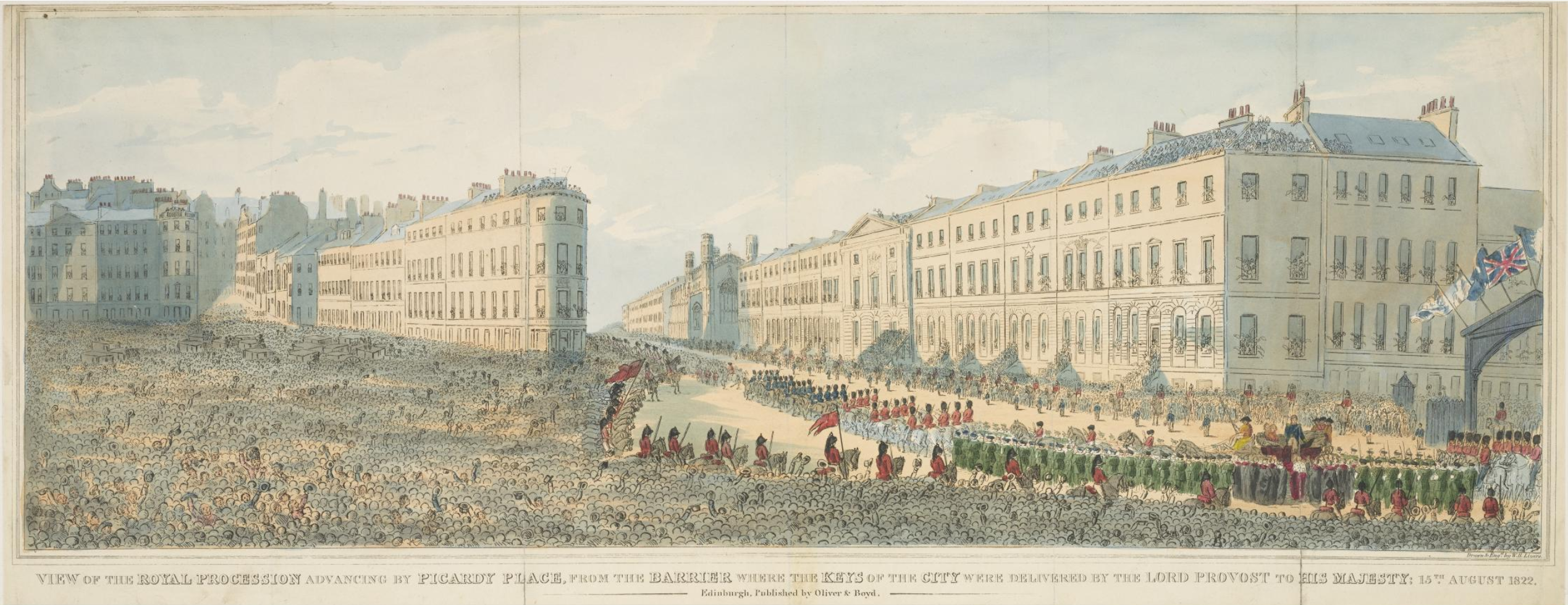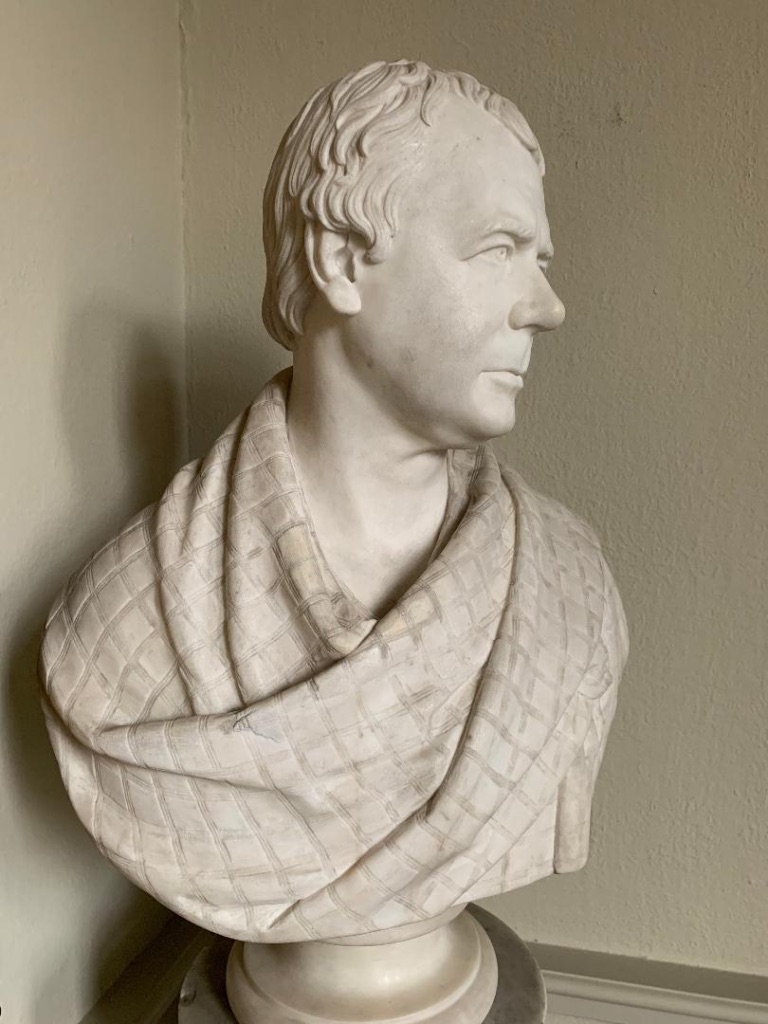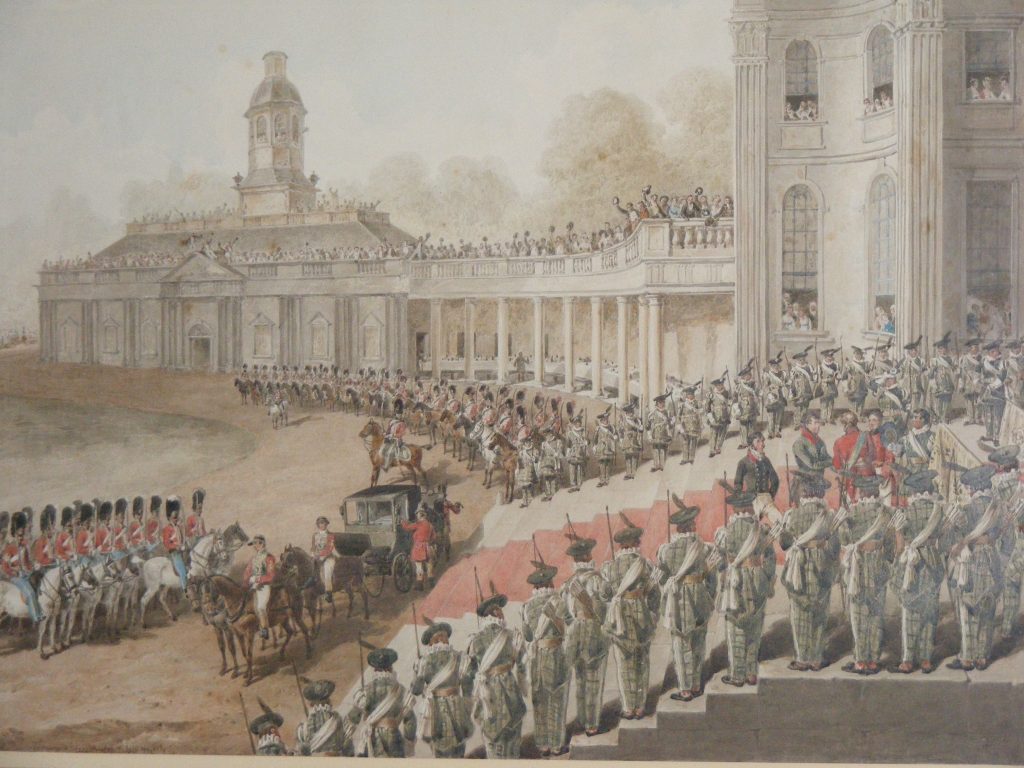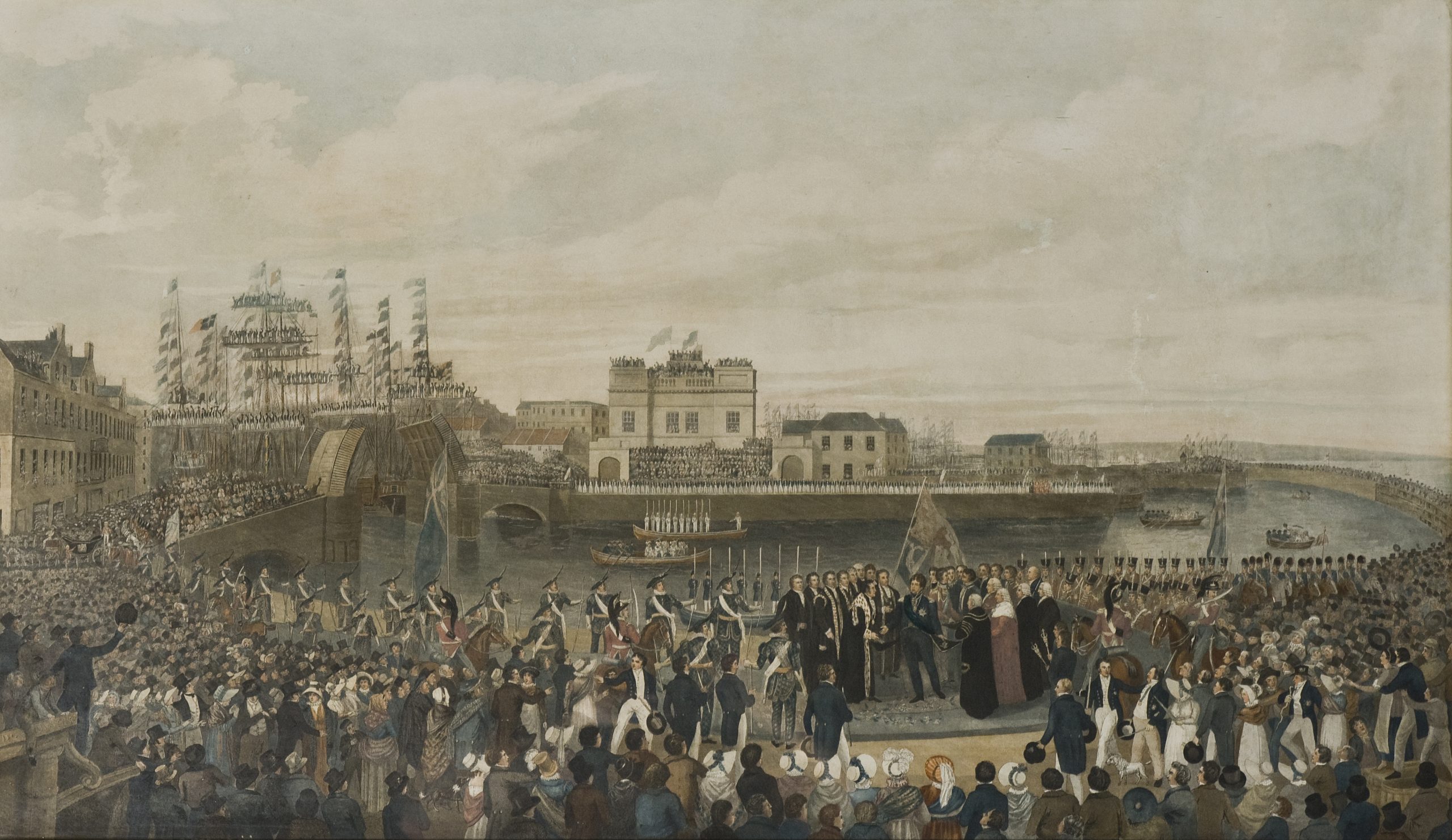
King George IV’s visit to Scotland in 1822 proved pivotal for the Royal Company. The last reigning monarch to have set foot in Scotland had been King Charles II when he was crowned at Scone in 1651. Much had happened in the intervening years: the Glorious Revolution of 1688, the Acts of Union in 1707, the accession of the Hanoverian George I in 1714, the Jacobite Risings of 1715 and 1745, the Napoleonic Wars and the ‘Radical War’ of 1820. These were turbulent times and much was riding on the success of the visit during which the Royal Company was to act as the King’s Body Guard.

|
The responsibility of stage-managing the visit fell to Sir Walter Scott, the renowned and hugely influential writer. As Prince Regent, King George IV had so enjoyed Sir Walter’s tale of the Jacobite Rising of 1745 – Waverley (1814) – that he invited him to dinner in London in 1815. They struck up a life-long friendship, no doubt facilitating the permission Sir Walter required to search for and recover the Honours of Scotland in 1818. Sir Walter Scott was the first baronet King George IV appointed on succeeding to the throne in 1820.
Sir Walter was admitted to the Royal Company in June 1821 and attended the King’s Coronation the following month. Sir Walter did not attend shooting competitions – possibly because his right leg was lame as a result of childhood polio – but he took a very great interest in the Royal Company. He was to become a member of the Council in 1825.
Given Sir Walter’s celebrity and friendship with the King, we may reasonably assume that he, in designing the pageantry for the Royal Visit, was active in promoting the Royal Company for a principal part and, indeed, in advising the Royal Company as to the possible opportunities.
On receiving the news of the King’s visit, the Captain-General, the Earl of Hopetoun, summoned a meeting of the Company at which a number of resolutions were passed. Principle amongst them was:
‘That an humble offer of the services of the Royal Company to attend on His Majesty either as his Body-Guard or in any other capacity that shall be assigned to them, shall be made through the Captain-General.’
The offer to act as the King’s Body Guard was readily accepted. |
| As The Royal Company’s historian of 1951 wryly observed, ‘The visit of King George IV to Edinburgh in 1822 offered a fresh opportunity to the sartorially ambitious section of The Royal Company.’ On 26 July 1821, the Council had decided on a new uniform, all the better to impress King George IV should he visit Edinburgh. When the King’s visit was confirmed, members of The Royal Company were instructed ‘to provide themselves with a proper uniform.’
Sir Walter Scott, ever the romantic, had invented a magnificent pageant in which the King would be presented as a new Jacobite king. The Royal Company were thus assured a prominent role. Bad weather prevented King George IV from landing at Leith on 14 August 1822 but Sir Walter Scott rowed out to the Royal George where the King met him with the exclamation, ‘What! Sir Walter Scott, the man in Scotland I most wish to see!’. |
|
The following day, on which ‘the sun shone out gloriously’, King George IV landed at Leith to be met by fifty Archers under Lord Elgin. The Archers then formed up either side of the Royal carriage and escorted the King up Leith Walk and on to Holyrood where the Captain-General and a further forty Archers were on parade to greet him. The Honours of Scotland having been presented, the Captain-General presented the Reddendo, in accordance with Queen Anne’s Charter, of a pair of silver barbed arrows.
The Royal Company undertook other duties during the King’s 14-day visit. Some were planned such as attendance at a levee at Holyrood on 17 August and as escort to the King for a ‘splendid procession’ from Holyrood to the Castle on 22 August. The Royal Company’s last duty for the King’s visit had not been planned but the opportunity was seized to line the great staircase at Hopetoun House on 29 August. The King was accompanied by the Duke of Dorset and was received on the steps by the Earl of Hopetoun. An escort of Royal Scots Greys were on parade in the forecourt while mounted troops of the East Lothian Yeomanry Cavalry lined the colonnade.

The visit was a spectacular success, not least for the Royal Company for they were now officially the King’s Body Guard for Scotland. A portrait of the Captain-General was commissioned and still hangs in Archers’ Hall, giving us the only contemporary detail of the uniform, which had been specially designed for the Royal Visit. Lord Hopetoun reciprocated by presenting the ‘Hopetoun Royal Commemoration Prize’, a handsome silver vase, which is still shot for annually at Holyrood.
As for Sir Walter Scott, his next novel – Quentin Durward (1823) – told the story of a Scottish archer in the service of the 15th century French King, Louis XI.


